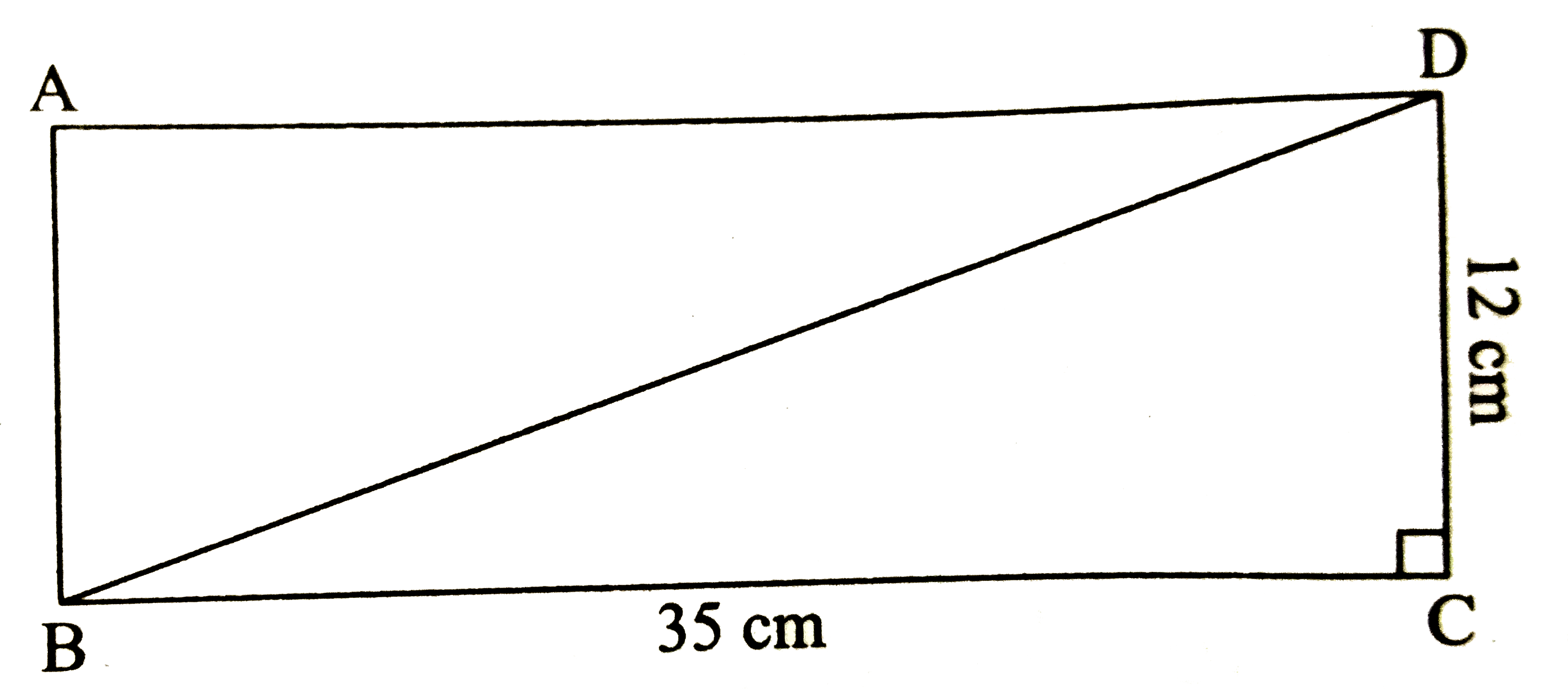The length of a rectangle is increasing at the rate 3.5 cm/sec. and its breadth is decreasing at the rate of 3 cm/sec. Find the rate of change of the area of the rectangle when length is 12 cm and breadth is 8 cm.
The correct Answer is:8cm2/sec
To solve the problem, we need to find the rate of change of the area of a rectangle given the rates of change of its length and breadth. Let's break it down step by step.
Step 1: Define the variables
Let:
- L = length of the rectangle
- B = breadth of the rectangle
- A = area of the rectangle
Step 2: Write the formula for the area
The area A of a rectangle is given by the formula:
A=L×B
Step 3: Differentiate the area with respect to time
To find the rate of change of the area with respect to time, we differentiate A using the product rule:
dAdt=LdBdt+BdLdt
Step 4: Substitute the known values
From the problem, we know:
- dLdt=3.5 cm/sec (length is increasing)
- dBdt=−3 cm/sec (breadth is decreasing)
- L=12 cm
- B=8 cm
Now we can substitute these values into the differentiated area formula:
dAdt=12×(−3)+8×3.5
Step 5: Calculate the values
Now we calculate each term:
1. 12×(−3)=−36
2. 8×3.5=28
Now, substitute these results back into the equation:
dAdt=−36+28
dAdt=−8 cm2/sec
Conclusion
The rate of change of the area of the rectangle when the length is 12 cm and the breadth is 8 cm is:
dAdt=−8 cm2/sec
This indicates that the area of the rectangle is decreasing at a rate of 8 cm²/sec.
---
Let:
- L = length of the rectangle
- B = breadth of the rectangle
- A = area of the rectangle
The area A of a rectangle is given by the formula:
A=L×B
To find the rate of change of the area with respect to time, we differentiate A using the product rule:
dAdt=LdBdt+BdLdt
From the problem, we know:
- dLdt=3.5 cm/sec (length is increasing)
- dBdt=−3 cm/sec (breadth is decreasing)
- L=12 cm
- B=8 cm
dAdt=12×(−3)+8×3.5
Now we calculate each term:
1. 12×(−3)=−36
2. 8×3.5=28
dAdt=−36+28
dAdt=−8 cm2/sec
The rate of change of the area of the rectangle when the length is 12 cm and the breadth is 8 cm is:
dAdt=−8 cm2/sec
This indicates that the area of the rectangle is decreasing at a rate of 8 cm²/sec.
Topper's Solved these Questions
- APPLICATION OF DERIVATIVESBOOK - CBSE COMPLEMENTARY MATERIALCHAPTER - APPLICATION OF DERIVATIVESEXERCISE - 6 MARK QUESTIONS
13 Videos
- APPLICATION OF DERIVATIVESBOOK - CBSE COMPLEMENTARY MATERIALCHAPTER - APPLICATION OF DERIVATIVESEXERCISE - 2 MARK QUESTIONS
20 Videos
- APPLICATIONS OF INTEGRALS BOOK - CBSE COMPLEMENTARY MATERIALCHAPTER - APPLICATIONS OF INTEGRALS EXERCISE - FOUR/SIX MARK QUESTIONS
26 Videos
Similar Questions
Knowledge Check
The length x of a rectangle is increasing at the rate of 3 cm/sec. and the width y is increasing at the rate of 2 cm/sec. If x=10 cm and y=6 cm, then the rate of change of its area is
A2cm2/secB−2cm2/secC38cm2/secD−38cm2/sec
Find the area of a rectangle whose length is 4.8 cm and breadth is 3.2 cm.
View SolutionFind the area of rectangle whose length is 6cm and breadth 4cm.
View SolutionFind the area of a rectangle whose length is 5.7 cm and breadth is 3.5 cm.
View SolutionThe length of a rectangle is decreasing at a rate of 3 cm/sec and breadth is increasing at a rate of 4 cm/sec. Find the rate of change of its (a) perimeter (b) area, when the length and breadth of rectangle are 7 cm and 8 cm respectively.
View SolutionFind the diagonal of a rectangle whose length is 35cm and breadth is 12cm.

View SolutionThe length 'x' of a rectangle is decreasing at the rate of 3 cm/m and the width 'y' is increasing at the rate of 2 cm/m. Find the rates of change of :
(a) the perimeter (b) the area of the rectangle when x = 8 cm and y = 6 cm.
View SolutionThe radius of a cylinder is increasing at the rate 2cm/sec. and its altitude is decreasing at the rate of 3cm/sec. Find the rate of change of volume when radius is 3 cm and altitude 5 cm.
View Solution
